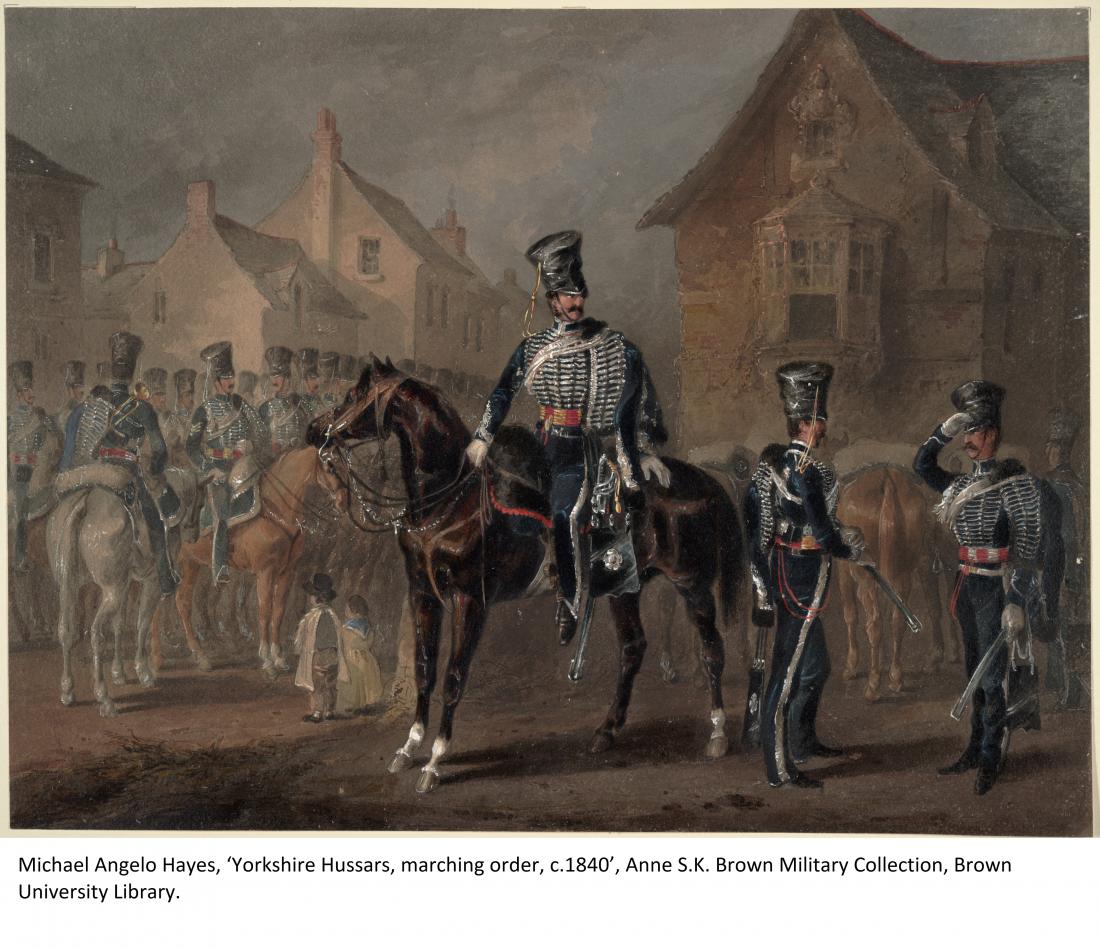
Networks - The Yorkshire Hussars: Connecting Communities
British yeomanry cavalry regiments played an important role in local social life, where dance was one of several activities which connected them to provincial communities. Formed in response to the French Revolutionary wars in the late eighteenth century, the yeomanry cavalry was a volunteer mounted force whose duties comprised not only repelling foreign dangers but also keeping domestic peace: quelling potential riots and delivering security (and sometimes influence) during elections. Its rank membership often consisted of tenantry and farmers, freeholders who could vote in parliamentary elections and who occupied some level of social privilege; officer positions were filled by nobility and gentry families, sometimes over successive generations, who made significant financial contributions to their regiments. Apart from their domestic responsibilities, they also played a ceremonial role, providing royal and civic escorts, attracting numerous spectators to their inspections or reviews, and hosting as well as being the focus of balls in local towns (Hay 2017; Mileham 1994; Talbot 2001). Regimental music bands played an important role in such events, providing not only a shining image of military membership but also contributing significantly to local social and political pleasures (Herbert and Barlow 2013).
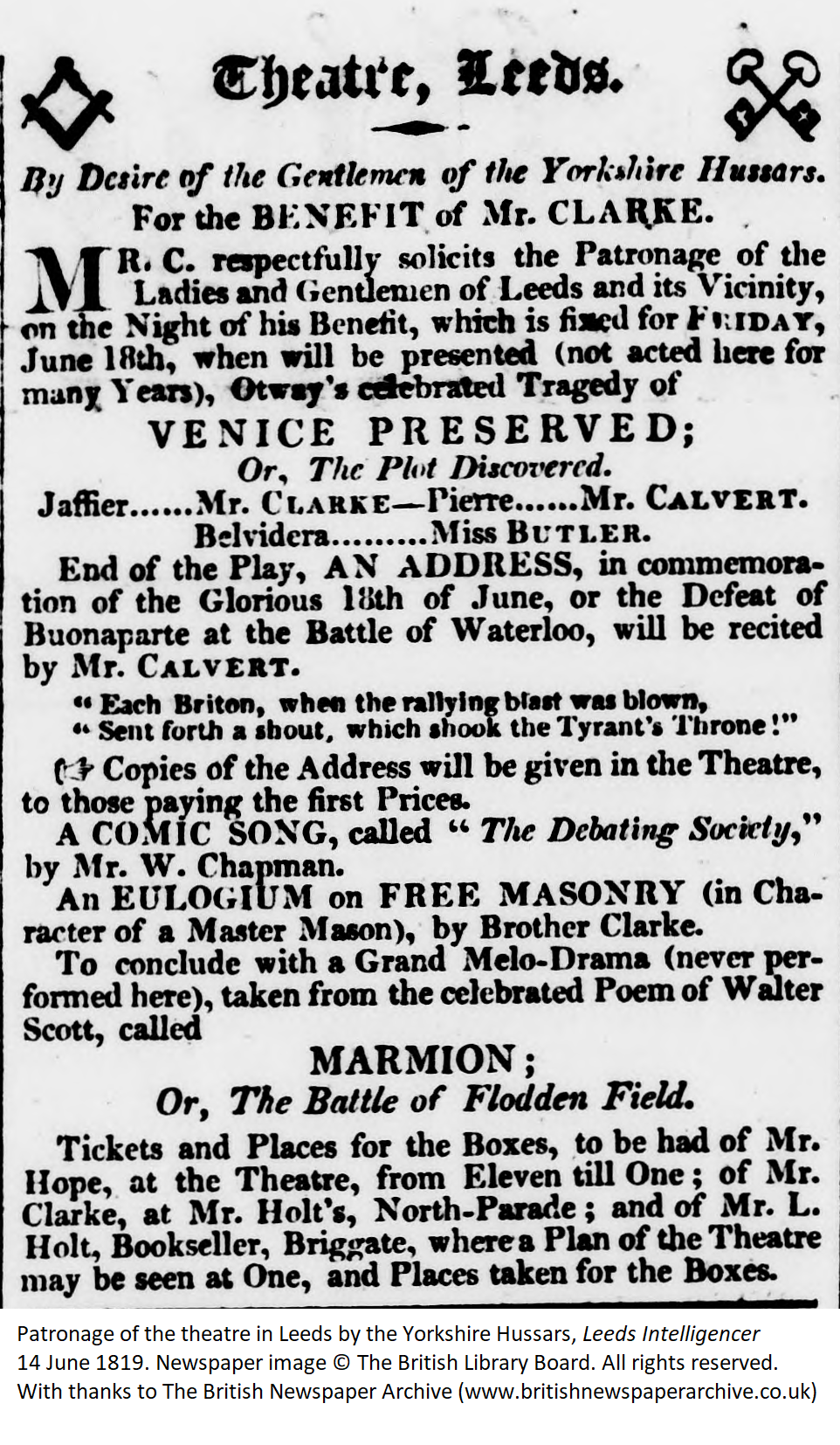 The Yorkshire Hussars was one such regiment and through newspaper announcements, we can trace aspects of their cultural impact on the communities within which they served. Entertainments were often clustered around the regiment’s permanent duty when they were stationed in a particular location for several days of annual training and review. Members of the regiment requested performances in theatres in Leeds and York, while reciprocal balls were given by the Hussars and local families when they were on duty in Doncaster, York, Ripon and Pontefract in the early 1820s. A snapshot of “Fashionable Gaieties” in the Yorkshire Gazette gives a sense of how music and dance were integrated into these local entertainments across a week: on Tuesday there was a private party where the Hussars band “played on the lawn, and gave amid the moonlight scenery a fresh charm to Clifford’s Tower”; on Wednesday an extra York Winter Assembly, including quadrilles and waltzes, was held thanks to the generosity of the subscribers to the usual series; on Friday there was another private party and on Saturday the Hussars patronised the theatre.
The Yorkshire Hussars was one such regiment and through newspaper announcements, we can trace aspects of their cultural impact on the communities within which they served. Entertainments were often clustered around the regiment’s permanent duty when they were stationed in a particular location for several days of annual training and review. Members of the regiment requested performances in theatres in Leeds and York, while reciprocal balls were given by the Hussars and local families when they were on duty in Doncaster, York, Ripon and Pontefract in the early 1820s. A snapshot of “Fashionable Gaieties” in the Yorkshire Gazette gives a sense of how music and dance were integrated into these local entertainments across a week: on Tuesday there was a private party where the Hussars band “played on the lawn, and gave amid the moonlight scenery a fresh charm to Clifford’s Tower”; on Wednesday an extra York Winter Assembly, including quadrilles and waltzes, was held thanks to the generosity of the subscribers to the usual series; on Friday there was another private party and on Saturday the Hussars patronised the theatre.
While the dance music for balls was provided by William Hardman’s band of the York Winter Assemblies on at least two such occasions, the Yorkshire Hussars’ band was often employed to contribute incidental music during the balls. 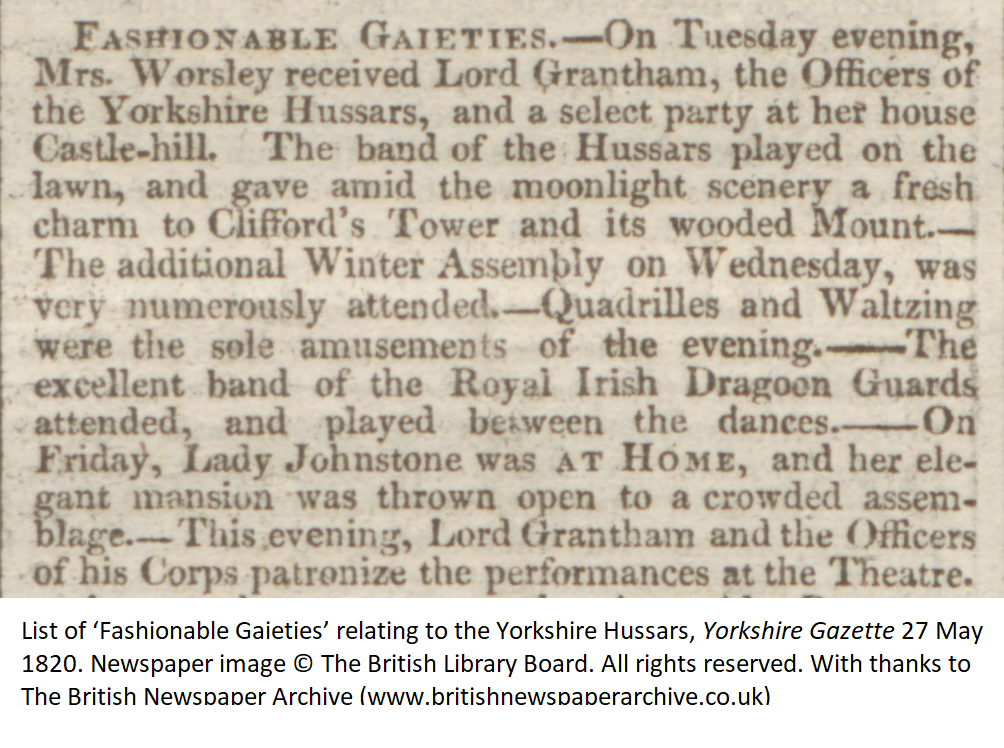 At the New Assembly Rooms in Pontefract in 1823, the band was stationed in an “elegant military tent” for a ball hosted by the regiment, during which they “performed several popular and lively airs” (Leeds Intelligencer 14 August 1823). This was just one aspect of the band’s social engagement over the next few decades which, in addition to playing during the regiment’s reviews, included performing for a public dinner in Ripon held for the anniversary of King George IV’s ascension to the throne; a fête champêtre in Pontefract Park; an archery meeting at Old Sleningford Hall; a procession in Ripon in celebration of Queen Victoria’s coronation; a grand entertainment at Ripley Castle; and in fundraising concerts held by the Ripon Mechanics’ Institution and Literary Society.
At the New Assembly Rooms in Pontefract in 1823, the band was stationed in an “elegant military tent” for a ball hosted by the regiment, during which they “performed several popular and lively airs” (Leeds Intelligencer 14 August 1823). This was just one aspect of the band’s social engagement over the next few decades which, in addition to playing during the regiment’s reviews, included performing for a public dinner in Ripon held for the anniversary of King George IV’s ascension to the throne; a fête champêtre in Pontefract Park; an archery meeting at Old Sleningford Hall; a procession in Ripon in celebration of Queen Victoria’s coronation; a grand entertainment at Ripley Castle; and in fundraising concerts held by the Ripon Mechanics’ Institution and Literary Society.
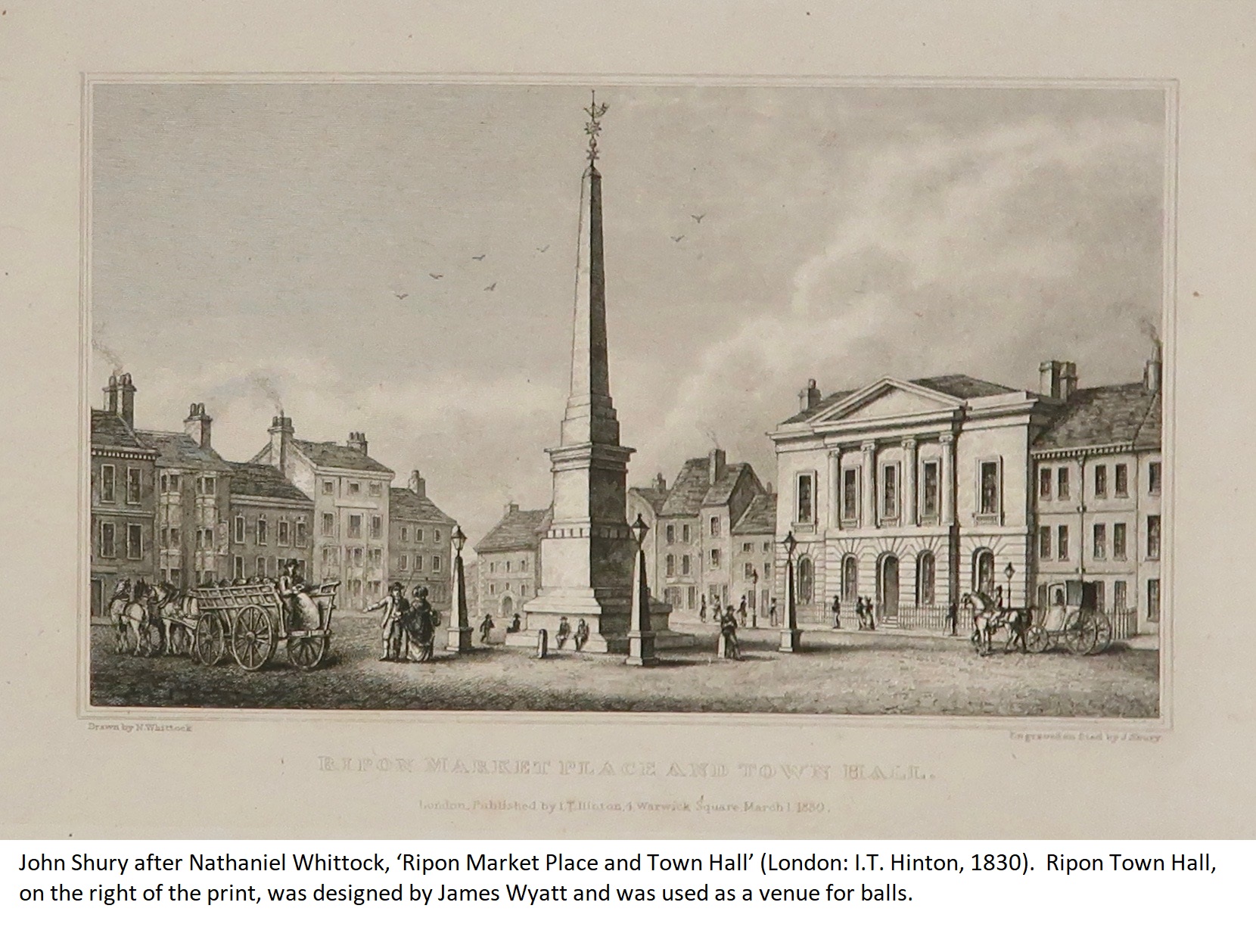 The Yorkshire Hussars’ connection to dance was solidified in a set of eponymous quadrilles by Andrew Roy, dedicated to the managers of the Ripon Winter Assemblies for the 1821-1822 season. Named on the title page, they likely comprised Thomas Philip Robinson, 3rd Baron Grantham, who was Lieutenant Colonel Commandant of the regiment from 1819; Henry Richard Wood, who held various military positions, including lieutenant with the Yorkshire Hussars in 1803 and later Major of the Ripon Local Militia (Stooks Smith 1853); Timothy Hutton of Clifton Castle, who held a leadership position within the Masham Volunteers (Fisher 1865; Urban 1864); and John Howard, who was possibly the Ripon attorney listed by Edward Baines in his History, Directory & Gazetteer of the County of York in 1822. Their managerial role with the Ripon Winter Assemblies can be seen as part of a broader commitment to patronising local cultural events.
The Yorkshire Hussars’ connection to dance was solidified in a set of eponymous quadrilles by Andrew Roy, dedicated to the managers of the Ripon Winter Assemblies for the 1821-1822 season. Named on the title page, they likely comprised Thomas Philip Robinson, 3rd Baron Grantham, who was Lieutenant Colonel Commandant of the regiment from 1819; Henry Richard Wood, who held various military positions, including lieutenant with the Yorkshire Hussars in 1803 and later Major of the Ripon Local Militia (Stooks Smith 1853); Timothy Hutton of Clifton Castle, who held a leadership position within the Masham Volunteers (Fisher 1865; Urban 1864); and John Howard, who was possibly the Ripon attorney listed by Edward Baines in his History, Directory & Gazetteer of the County of York in 1822. Their managerial role with the Ripon Winter Assemblies can be seen as part of a broader commitment to patronising local cultural events. 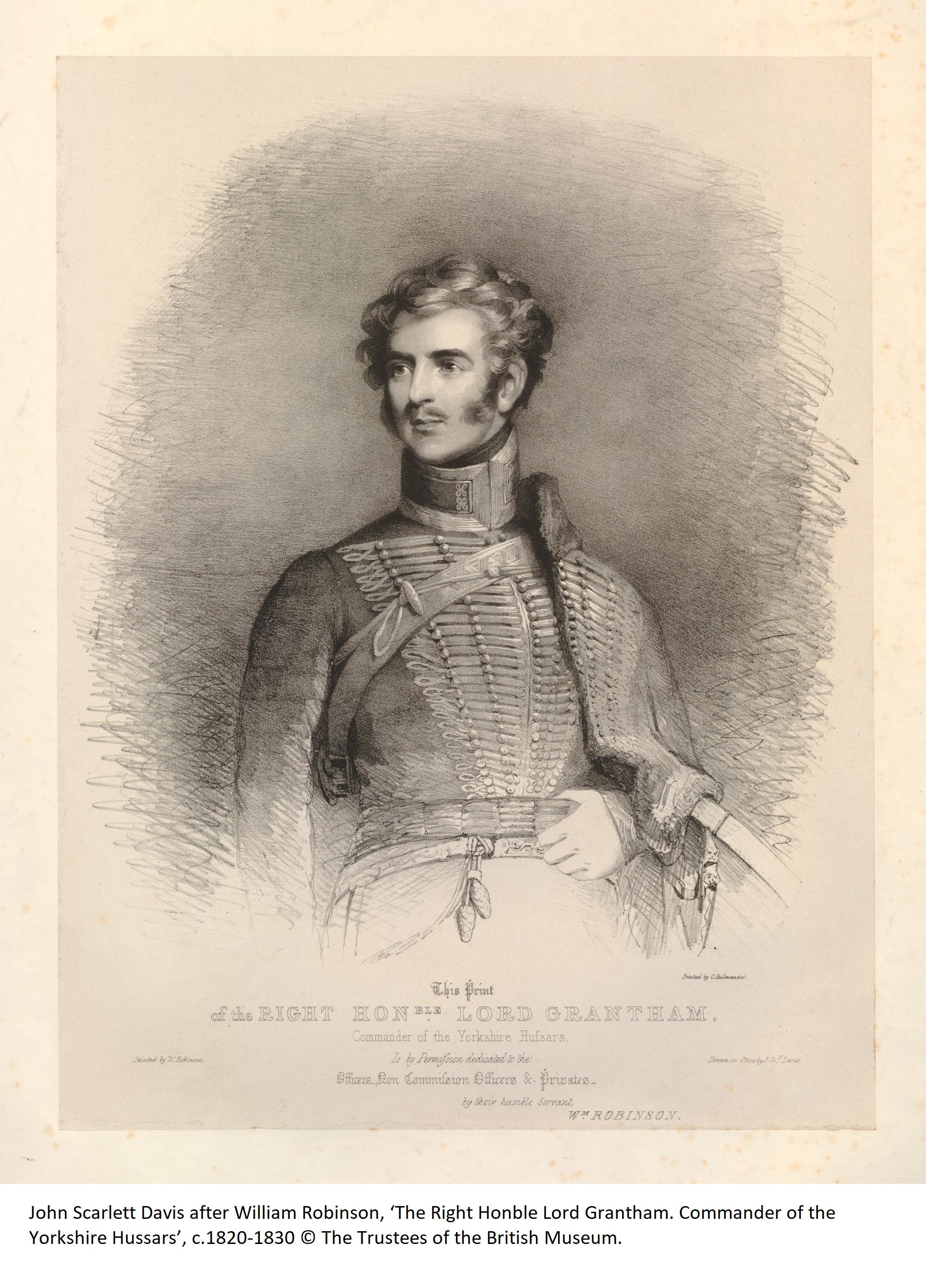 With the exception of John Howard, the remainder of the quartet served at various points as patrons and/or stewards for the different iterations of the Yorkshire Musical Festival (Crosse 1825; Second Yorkshire Musical Festival n.d.; Third Yorkshire Musical Festival n.d.). They also held similar roles for other events: Henry Richard Wood was a steward for the Ripon balls in 1825 (Pullen and Hughes Parry 2004) and hosted a ball for the Yorkshire Hussars at Hollin Hall in 1834; Lord Grantham was a steward for the Artists’ General Benevolent Institution Festival in 1827; and Timothy Hutton was a patron of the York Philharmonic Society Concert and Ball in 1848 (Jewitt 1848).
With the exception of John Howard, the remainder of the quartet served at various points as patrons and/or stewards for the different iterations of the Yorkshire Musical Festival (Crosse 1825; Second Yorkshire Musical Festival n.d.; Third Yorkshire Musical Festival n.d.). They also held similar roles for other events: Henry Richard Wood was a steward for the Ripon balls in 1825 (Pullen and Hughes Parry 2004) and hosted a ball for the Yorkshire Hussars at Hollin Hall in 1834; Lord Grantham was a steward for the Artists’ General Benevolent Institution Festival in 1827; and Timothy Hutton was a patron of the York Philharmonic Society Concert and Ball in 1848 (Jewitt 1848).
The contribution that the Yorkshire Hussars’ band made to musical and dance life in Ripon extended deeper into the nineteenth century, largely via the band’s leaders. In December 1836, the clarinettist John Gibson hosted a military concert and ball at the Ripon Town Hall, in which the band performed operatic extracts from Bellini and Auber, in addition to at least one work composed by Gibson himself. The following year, Gibson was part of a concert and ball sponsored by Mrs Lawrence of Studley Royal and the Countess de Grey, Lord Grantham’s wife, in which he played a clarinet concerto. Members of the band were also extracted to play for local balls, such as when two of the band’s musicians were engaged for a ball at nearby Kirklington. The 1840s saw the band giving regular public performances at the Riding School in Ripon under the leadership of the bassoonist George Sale, a practice which continued through until at least the 1850s; their earlier repertoire included dance forms such as waltzes and gallopades.
The Yorkshire Hussars were clearly at the centre of various cultural activities, including dance. Through the reciprocity of ball-giving between the regiment and local families, their sponsoring of theatrical productions, and the performances of their band, they stimulated and connected creative endeavours within their communities.
